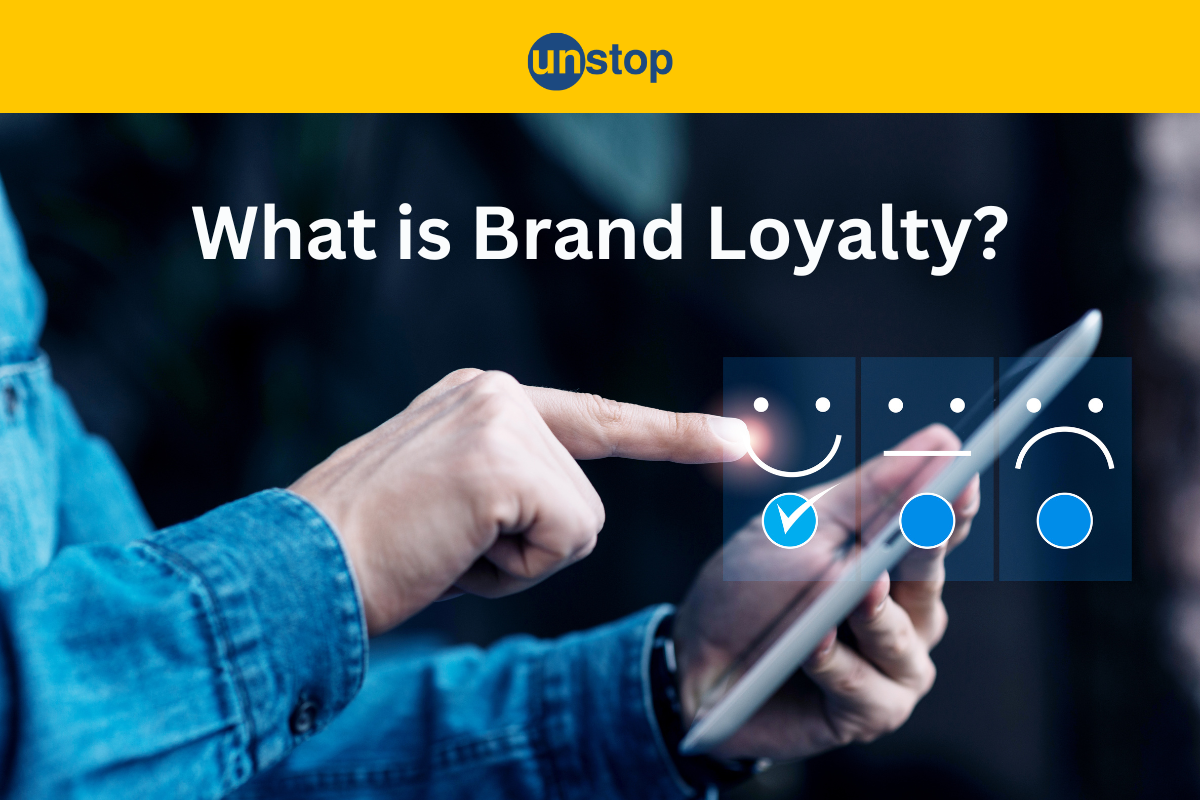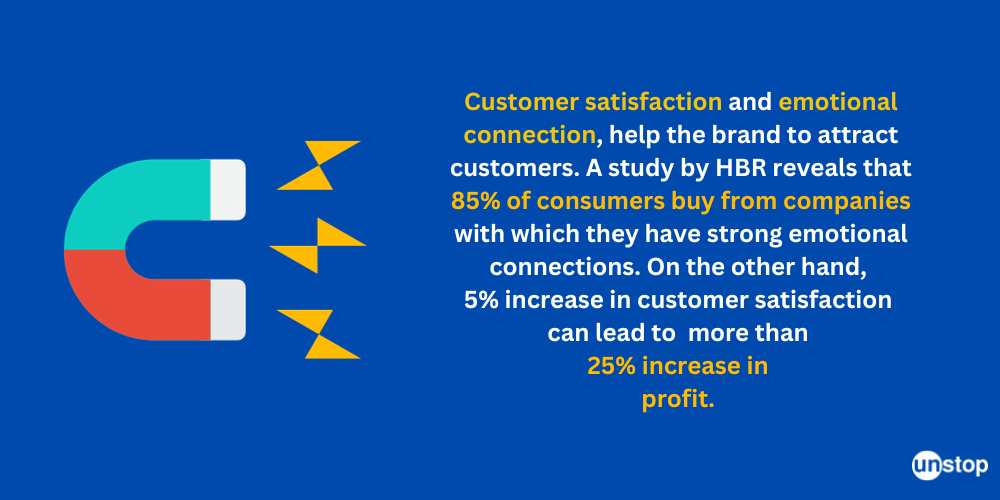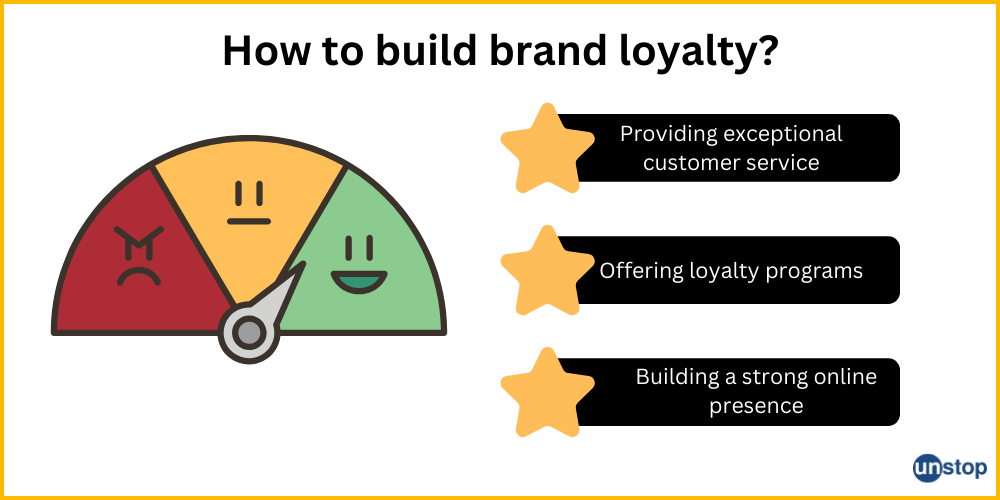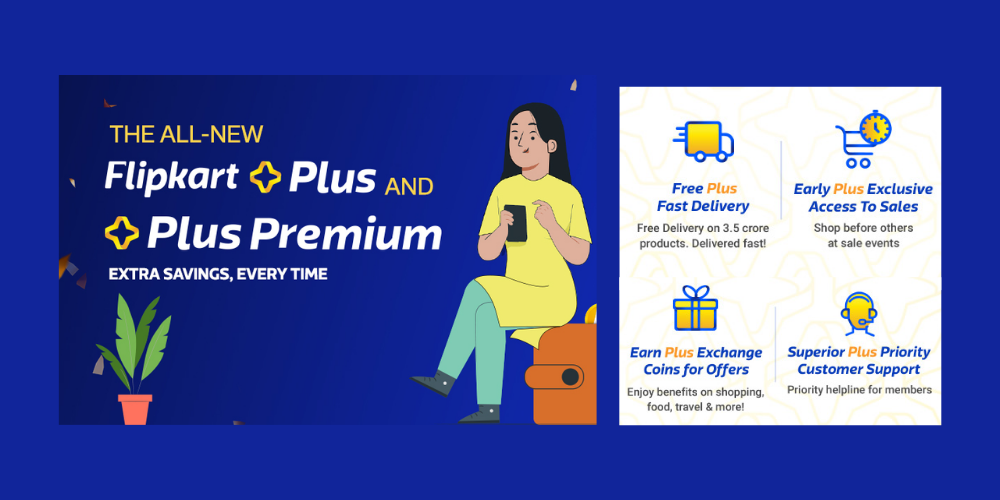- What is a Brand & Why is it Important?
- Elements of a Brand: Mission, Vision, and Values
- Types of Brands and their Significance
- Branding Strategies: Private, Multiproduct, and Mixed
- Brand Image and Its Impact on Perception
- Building a Strong Brand
- Frequently Asked Questions
- Understanding Brand Equity: Definition and Elements
- Importance of Brand Equity
- Evolution Of Brand Equity In The Digital Age
- Brand Equity in the Global Marketplace
- Measuring Brand Equity: Metrics & Methods
- Managing Brand Equity: Salient Elements
- Building & Managing Brand Equity: Best Practices
- The Future of Brand Equity
- Conclusion
- Frequently Asked Questions
- What is Brand Management?
- Importance of Brand Management
- Benefits of Effective Brand Management
- Principles of Brand Management
- Strategies for Successful Brand Management
- Brand Management vs. Marketing
- Conclusion: The Power of Brand Management
- Frequently Asked Questions
- Importance of Brand Image in Marketing
- Key Elements of a Successful Brand Image
- Brand Image vs. Brand Identity: Key Differences
- Measuring and Monitoring Brand Image
- Strategies for Maintaining and Enhancing Brand Image
- The Power of a Positive Brand Image
- FAQs
- What is Brand Awareness and its Importance?
- Benefits of Brand Awareness
- Brand Awareness Strategy: Some Tried & Tested Methods
- Some Creative Ways to Boost Brand Awareness
- Significance of Brand Awareness
- Conclusion
- Frequently Asked Questions
- Porter's 5 Forces Model: What Is It?
- Porter's 5 Forces Model: How To Use It?
- Common Barriers to Entry
- Evaluating Suppliers' Negotiating Power
- Understanding the Bargaining Power of Buyers
- Analyzing Threat of Substitute Products or Services
- Rivalry amongst Competitors (Old & New)
- Drawbacks of the Five Forces Model
- Conclusion
- Frequently Asked Questions
- How Well Do You Know Porter’s 5 Forces? Take A Quiz!
- What is Buying Motive?
- Types Of Buying Motives
- Importance Of Buying Motives
- Six Universal Buying Motives
- Identifying Buyer's Motives
- Utilizing Buying Motives In Sales
- Challenges In Interpreting Buying Motives
- Frequently Asked Questions (FAQs)
- 💸 Think You Know Buying Motives? Take A Quiz!
- Understanding the Elements and Importance of Brand Equity
- What are brand equity models?
- Comparing Keller's and Aaker's brand equity models
- Real-world examples of brand equity in action
- Strategies for building strong brand equity
- Key takeaways on brand equity models
- FAQs
- Mastered Brand Equity Models? Prove It!
- What Is Brand Positioning?
- The Importance of Brand Positioning for Businesses
- Creating A Brand Positioning Strategy: Step-By-Step Process
- Measuring the Success of Your Brand's Positioning
- Examples of Strong Brand Positioning in the Market
- Types of Brand Positioning Strategies
- Social Media Engagement: A Key Positioning Strategy
- What Makes a Good Brand Positioning Strategy?
- Conclusion
- Frequently Asked Questions
- Quick Quiz to Test Your Knowledge of Brand Positioning!
- Brand Personality: Definition & Importance
- How to Define Your Brand Personality?
- Choosing Your Brand Personality Attributes
- Dimensions of Brand Personality Framework: The Aaker Model
- Incorporating Core Values Into Your Brand Personality
- Examples of Brand Personalities in Action
- Conclusion
- Frequently Asked Questions
- Brand Personality Quiz– Let's Go!
- What is Brand Identity?
- What are the Key Components of Brand Identity?
- Importance & Benefits Of Brand Identity
- Importance of Unique Visual Elements in Brand Identity
- Communication Style and Tone of Voice in Brand Identity
- Steps on How to Create a Brand Identity
- Brand Identity Example- Coca-Cola
- Examples of Strong Brand Identities in Different Industries
- Consistency in Online and Offline Branding
- Conclusion
- Frequently Asked Questions (FAQs)
- Think You Know Brand Identity? Take A Quiz!
- Brand Identity Prism: Understanding The Concept
- Role Of Culture In Brand Identity Prism
- Brand Identity Prism: Visualizing The Sender & Receiver
- Benefits Of Brand Identity Prism
- Examples Of Brand Identity Prism In Action
- Brand Identity Prism: Key Takeaways
- Frequently Asked Questions
- Take This Brand Identity Prism Quiz!
- What is Market Segmentation?
- Importance of Market Segmentation
- The Market Segmentation Process
- Types of Market Segmentation
- Common Challenges in Implementing Market Segmentation
- Overcoming Challenges in Market Segmentation
- Conclusion: Understanding The Impact
- Frequently Asked Questions (FAQs)
- Test Your Market Segmentation Knowledge– Take This Quiz!
- What is Brand Loyalty? Meaning & Significance
- Characteristics of Brand Loyalty
- Measuring and Tracking Brand Loyalty
- Importance of Brand Loyalty for Companies
- Brand Loyalty Examples and Types
- Strategies for Building Brand Loyalty
- Differentiating Brand Loyalty from Customer Loyalty
- Conclusion: The Power and Importance of Brand Loyalty
- Frequently Asked Questions
- Think You Know Brand Loyalty? Take A Quiz!
- Brand Extension Meaning
- Brand Extension Types
- Understanding Brand Line Extension vs. Brand Extension
- The Impact and Potential of Brand Extension
- Successful and Unsuccessful Brand Extensions Examples
- Summing Up
- Frequently Asked Questions
- Quiz– Test Your Brand Extension!
- Step-by-step guide on how to build a brand from scratch
- Benefits of a Strong Brand
- Examining Successful Brand-Building Examples
- Summing up
- Frequently Asked Questions
- Know How to Build a Brand? Prove it With This Quiz!
- What is Marketing Mix?
- Understanding the 4 Ps of Marketing
- The Seven Ps of Marketing
- Implementing the Marketing Mix in Business
- Amul: Example of Successful Marketing Mix Implementation
- Exploring Alternative Marketing Mix Models
- Conclusion
- Frequently Asked Questions (FAQs)
- Mastered the Marketing Mix! Test Your Knowledge Now
- Defining Brand Value and its Importance
- Measuring Brand Value
- Factors that Make a Brand Valuable to Customers
- Examples of Brand Value from Real World
- Brand Value Versus Brand Equity
- The Impact of Brand Value on Business Marketing Strategies
- Conclusion: The Significance of Brand Value
- Frequently Asked Questions
- How Much Do You Know About Brand Value? Take This Quiz!
- Definition Of Co-Branding
- Different Types Of Co-Branding
- Benefits & Advantages Of Co-Branding
- Strategies For Successful Co-Branding Partnerships
- Notable Successful Co-Branding Examples
- Factors Influencing Co-Branding Success
- Frequently Asked Questions (FAQs)
- Co-Branding Quiz: Test Your Expertise!
- What is a Target Market?
- Importance of Target Market: Why Do We Need It?
- Types of Target Market
- The Target Marketing Process
- Primary Research for Target Markets
- Leveraging Target Market Segmentation for Sales
- Conclusion
- Frequently Asked Questions (FAQs)
- 🎯 Do You Know Your Target Market? Take the Quiz!
- Importance of Understanding Consumer Decisions
- Traditional vs Contemporary Consumer Behaviour Model
- Traditional Models of Consumer Behaviour
- Learning Model of Consumer Behaviour
- Psychoanalytical Model of Consumer Behaviour
- Sociological Model of Consumer Behaviour
- Economic Model of Consumer Behaviour
- Contemporary Models of Consumer Behaviour
- EKB Model of Consumer Behaviour
- Black Box Model of Consumer Behaviour (Stimulus-Response Consumer Behaviour Model)
- Howard Sheth Model of Consumer Behaviour
- Hawkins-Stern Model of Consumer Behavior
- Webster and Wind Model
- Nicosia Model of Consumer Behaviour
- How to Select a Consumer Behaviour Model?
- Final Remarks
- Frequently Asked Questions
- 🛍️ Consumer Behavior Models Quiz: Test Your Knowledge!
- What is a Consumer?: Definition & Role
- The Evolution of the Term "Consumer"
- Consumer Behavior
- Different Types of Consumers
- Consumers' Motivation for Buying
- Relationship Between Businesses and Consumers
- Consumer Rights in India
- Current Challenges for Consumers
- The Future of Consumers in a Digital Age
- Final Remarks
- Frequently Asked Questions (FAQs)
- 🛍️ Consumer or Customer? Test Your Knowledge!
- What is a Market Structure?
- Types of Market Structures
- How Markets Work
- Significance of Different Types of Market
- Summing Up
- Frequently Asked Questions
- 🏪 Market Structures 101: Take the Quiz!
- Understanding the Concept of Corporate Branding
- Importance and Advantages of Corporate Branding
- Researching Competitor Brands
- Implementing Effective Corporate Branding Strategies
- Successful Corporate Branding Examples: Alphabet, Walmart & SAP
- Impact and Success of Corporate Branding
- Conclusion
- Frequently Asked Questions
- 🏢 Corporate Branding Quiz: Test Your Knowledge!
- Perception Management: Meaning & Importance
- Process Of Perception Management
- Influencing & Shaping Perceptions
- Strategies For Perception Management
- Technology In Perception Management
- Branding & Control In Perception Management
- Customer Feedback For Perception Improvement
- Frequently Asked Questions (FAQs)
- 🧠 Perception Management Quiz: How Well Do You Know It?
- Definition & Importance Of Target Marketing
- Advantages & Disadvantages Of Target Marketing Strategies
- Examples Of Target Marketing Strategies
- Creating An Effective Target Market Strategy
- Segmentation: Key To Targeted Marketing
- Utilizing Social Media For Targeted Marketing
- Frequently Asked Questions ( FAQs)
- 🎯 Target Marketing Strategies Quiz: Test Your Knowledge!
- Definition and Significance of Brand Association
- Brand Association Types
- Successful Brand Association Examples
- Strategies for Building Strong Brand Associations
- Overcoming Negative Brand Associations
- Conclusion: Harnessing the Power of Brand Association
- Frequently Asked Questions
- 🔗 Brand Association Quiz: Check Your Brand Knowledge!
- What is Product Positioning?
- Importance Of Product Positioning in Marketing
- Difference between Product Positioning and Brand Positioning
- Types Of Product Positioning
- Main Components Of Product Positioning
- Successful Product Positioning Strategies
- Understanding the Product Positioning Process
- Examples Of Effective Product Positioning
- Conclusion
- Frequently Asked Questions (FAQs)
- 🔥 Product Positioning Quiz: Test Your Marketing Smarts!
- How do we define niche market?
- Strategies To Find Your Niche Market
- 7 Examples Of Niche Markets
- Benefits Of Targeting A Niche Market
- Testing Your Product Or Service For Niche Market
- Conclusion
- Niche Market: Frequently Asked Questions (FAQs)
- 🎯 Niche Market Quiz: Test Your Knowledge!
- Importance Of STP In Marketing
- Understanding STP in Marketing Step-by-Step
- Process Of Implementing STP In Marketing
- Examples Of Successful STP Strategies
- Conducting An STP Marketing Analysis
- Choosing Your Marketing Mix
- Strategies For Targeting the Right Audience
- Conclusion
- Frequently Asked Questions (FAQs)
- 🔍 STP in Marketing Quiz: Test Your Knowledge!
- Sales and Marketing: Understanding the Core Concepts
- Key Differences Between Sales and Marketing
- Types of Marketing
- Types of Sales
- Power of Synergy: Sales and Marketing Alignment (Smarketing)
- Frequently Asked Questions (FAQs)
- Definition Of Customer Satisfaction
- Importance Of Customer Satisfaction
- Strategies For Effective Customer Satisfaction
- Measuring Customer Satisfaction
- Customer Satisfaction in Marketing & Sales
- Frequently Asked Questions (FAQs)
- 🎯 Customer Satisfaction Quiz: Are You an Expert?
- Customer Delight Meaning
- Benefits of Customer Delight
- Customer Satisfaction Vs Customer Delight
- Strategies With Customer Delight Examples
- How to Measuring the Impact Of Customer Delight?
- Customer Delight Examples - 3 instances by big brands that won hearts
- Common Mistakes In Customer Delight
- Conclusion
- Frequently Asked Questions (FAQs)
- 🌟 Customer Delight Quiz: Can You Ace It?
- What is a Marketing Plan?
- Types Of Marketing Plan
- What are the Key Components of a Marketing Plan?
- Steps for Effective Marketing Planning
- Crafting Your SEO Content Strategy
- Budgeting & Resource Allocation
- Identifying & Analyzing Competition
- Measuring Success with KPIs
- Importance of Flexibility in Marketing Planning
- Challenges of Marketing Plan
- Marketing Plan vs Business Plan
- Conclusion
- Frequently Asked Questions (FAQs)
- 📊 Marketing Planning Quiz: Test Your Knowledge!
- What is Marketing Control?
- Types of Marketing Control (with Examples)
- Annual Plan Marketing Control
- Profitability Marketing Control
- Efficiency Marketing Control
- Strategic Marketing Control
- Process of Marketing Control
- Techniques Used in Marketing Control
- Frequently Asked Questions
Brand Loyalty: How Committed Customers Lead To Business Success!

Brand loyalty is the holy grail of business success. It's the deep-rooted attachment and unwavering preference that customers have for a specific brand that gives it a competitive advantage. This habitual buying behavior is driven by attitudes and beliefs. In today's fiercely competitive market, marketers must prioritize building strong customer relationships to enhance the customer experience and maximize their marketing efforts. Why? Because this translates into repeat purchases, positive word-of-mouth recommendations, and the creation of a tribe of dedicated brand loyalists who act as brand ambassadors.
Successful brands have a clear understanding of brand loyalty meaning. Considering its importance, they invest sufficient time, effort, and resources into cultivating affinity of customers for their brand. In this article, we will see how brand loyalty can help businesses make profits and make a mark in the highly competitive market.
What is Brand Loyalty? Meaning & Significance
As per definition, brand loyalty is the tendency of consumers to repeatedly purchase products or services from a specific brand rather than switching to competitors. It measures the customer's commitment and attachment to a particular brand.
Brand loyalty is often built on trust, quality, positive experiences, and emotional connections with the brand. When consumers know about the brand and like it over other alternatives, they are more likely to repurchase, recommend it to others, and resist switching to alternatives even when faced with competitive offers. Building brand loyalty is important for businesses as it can lead to long-term customer relationships and increased profitability.
Understanding Customer Behavior and Brand Loyalty
Brand loyalty cannot be build in a day. It is a gradual process and the first step that businesses must take in this direction is understand customer behavior. By studying the factors that influence brand loyalty, companies can tailor their strategies to build strong relationships with customers. The two main factors for this are customer satisfaction and emotional connection.

Customer satisfaction plays a critical role in building brand loyalty. When customers are happy with their purchase experience, they are more likely to become loyal to a particular brand. Trust is another key driver of brand loyalty. When customers trust a brand, they feel confident in making repeat purchases and recommending the brand name to others.
Emotional connection is another vital factor for fostering brand loyalty. When customers feel emotionally connected to a brand, they develop a sense of attachment and loyalty towards it. This emotional bond can be built through effective marketing campaigns that resonate with the target audience on a deeper level.
Understanding customer needs and preferences allows companies to tailor their strategies effectively. By analyzing customer data and feedback, businesses can identify patterns in purchase behavior and adapt their offerings accordingly. This customization creates an enhanced customer experience that strengthens the bond between the customer and the brand.
Moreover, providing exceptional customer service is crucial for cultivating loyal customers. Promptly addressing any issues or concerns and going above and beyond to meet customer expectations helps build trust and loyalty over time.
For understanding the brand loyalty meaning better, it is important to note that, brand loyalty is not just about attracting new customers. It is also about retaining existing ones. Loyal customers tend to have higher lifetime value as they make repeat purchases over an extended period. By focusing on developing strong relationships with existing customers, businesses can increase their revenue potential significantly.
Also Read: What is Brand Equity?
Characteristics of Brand Loyalty
Loyal customers are a valuable asset for any business. These individuals have a strong affinity towards a specific brand and are less likely to switch to competitors. Let's dive into the key characteristics of brand loyalty.
Higher Engagement and Repurchase Intention
One of the defining traits of customers who are loyal to the brand is their high level of engagement with the brand. They actively seek out information about new products or updates, follow the brand on social media, and participate in loyalty programs. This engagement translates into increased repurchase intention, as these customers are more likely to choose the same brand repeatedly.
Willingness to Pay Premium Prices
Brand loyalists understand the value that a particular brand offers and are willing to pay premium prices for it. They perceive the quality and consistency associated with the brand as worth the extra cost. This willingness to pay more contributes not only to higher revenue but also helps establish a positive brand image.
Trust, Quality, Consistency, and Positive Experiences
Building trust is crucial in fostering brand loyalty. Loyal customers have confidence in the reliability and credibility of their preferred brands. They associate these brands with high-quality products or services that consistently meet their expectations. Positive experiences further reinforce this trust and strengthen their bond with the brand.
Measuring and Tracking Brand Loyalty
To gauge brand loyalty, businesses can utilize various metrics and tracking methods. By employing these strategies, companies can gain valuable insights into customer behavior and the effectiveness of their branding efforts.
Customer Retention Rate, Net Promoter Score (NPS), and Customer Lifetime Value (CLV)
One way to measure brand loyalty is by analyzing the customer retention rate. This metric indicates the percentage of customers who continue to support a brand over time. A high retention rate suggests that customers are loyal and satisfied with the company's products or services.
Another useful metric is the Net Promoter Score (NPS). This score measures how likely customers are to recommend a brand to others. It provides an indication of customer satisfaction and loyalty. A higher NPS indicates a higher level of brand advocacy.
Examining the Customer Lifetime Value (CLV) can provide insights into brand loyalty. CLV calculates the total revenue a customer generates throughout their relationship with a company. Higher CLV values indicate stronger loyalty and repeat purchases.
Surveys, Feedback Mechanisms, and Social Media Monitoring
Businesses can track consumer behavior through surveys, feedback mechanisms, and social media monitoring. Surveys allow companies to directly ask customers about their perceptions of the brand, product quality, and overall satisfaction levels.
Feedback mechanisms such as online reviews or customer service interactions provide valuable insights into customer sentiments towards a brand. Monitoring social media platforms allows businesses to observe conversations related to their brand, enabling them to identify loyal customers and address any issues promptly.
Analyzing Repeat Purchases, Referrals, and Online Reviews
Analyzing data on repeat purchases can help assess brand loyalty. Customers who consistently choose a particular brand over competitors demonstrate strong loyalty. Referrals from satisfied customers indicate trust in the brand's offerings.
Online reviews play a crucial role in measuring brand loyalty as well. Positive reviews reflect satisfied customers who are likely to remain loyal, while negative reviews may indicate areas for improvement.
By utilizing these metrics and tracking methods, businesses can gain valuable insights into brand loyalty. This information enables companies to make informed decisions about their branding strategies and build stronger customer relationships.
Importance of Brand Loyalty for Companies
Brand loyalty is a valuable asset for companies, providing numerous benefits that contribute to their success in the marketplace. Let's explore some of the advantages that loyal customers bring to businesses.
Consistent Revenue Streams
Loyal customers are like a reliable money-making machine for companies. They repeatedly purchase products or services over time, generating consistent revenue streams. This steady influx of income allows businesses to plan and allocate resources more effectively, leading to long-term stability and growth.
Word-of-Mouth Marketing
When customers develop a strong affinity for a brand, they become natural advocates. They willingly recommend the brand to others through word-of-mouth marketing. This type of organic promotion is incredibly powerful as it relies on personal experiences and trust. Positive recommendations from loyal customers can attract new customers and expand the company's customer base without significant marketing expenses.
Increased Market Share and Protection Against Price Competition
Brand loyalty builds higher levels of trust between customers and companies. Loyal customers have confidence in the quality, reliability, and value provided by their preferred brands. This trust translates into increased market share as loyal customers tend to stick with their favorite brands even when faced with competitive alternatives.
Brand loyalty acts as a shield against price competition. Customers who are deeply committed to a particular brand are often willing to pay premium prices because they believe in the superiority of that brand's offerings.
Brand Loyalty Examples and Types
Brand loyalty comes in different forms, each driven by distinct factors. Let's explore two main types of brand loyalty: behavioral loyalty and attitudinal loyalty, along with some examples that illustrate their impact.
Behavioral Loyalty
Behavioral loyalty refers to repetitive purchasing patterns driven by habit or convenience. This type of brand loyalty is reflected when consumers consistently choose a particular brand out of familiarity or ease. For instance, you might find yourself buying the same toothpaste brand every time you run out without considering other options. This type of loyalty is often rooted in routine and practicality.
Here are some brand loyalty examples:
- Many consumers exhibit behavioral loyalty towards Nike, consistently purchasing their athletic shoes and apparel due to the brand's reputation for quality and style.
- Coca-Cola has successfully cultivated behavioral loyalty across generations with its classic soda formula, making it a go-to choice for many soft drink enthusiasts.
Attitudinal Loyalty
Attitudinal loyalty stems from an emotional connection with a specific brand. Consumers who feel strongly about a particular brand develop a sense of attachment and identify themselves as loyal supporters. This type of loyalty goes beyond mere habit; it is fueled by positive experiences, trust, and alignment with the brand's values.
For instance:
- Apple has created a cult-like following among its customers who are passionate about the company's innovative products, sleek design, and user-friendly interfaces.
- Starbucks has built attitudinal loyalty through its emphasis on creating an inviting atmosphere for coffee lovers, fostering a sense of community and belonging.
Strategies for Building Brand Loyalty
To build brand loyalty, it's crucial to implement effective strategies that resonate with customers and keep them coming back for more. Let's explore some key approaches that can help cultivate brand loyalty and create a loyal customer base.

Providing exceptional customer service
Exceptional customer service plays a vital role in building brand loyalty. When customers have positive experiences with a company, they are more likely to develop trust and loyalty towards the brand. By going above and beyond to meet their needs, addressing concerns promptly, and providing personalized support, companies can create lasting impressions that foster brand loyalty.
Building a strong online presence
In today's digital age, having a strong online presence is essential for building brand loyalty. Engaging content on websites and social media platforms helps companies connect with their target audience on a deeper level. By consistently sharing valuable information, interacting with followers through comments and messages, and showcasing the unique aspects of their products or services, brands can cultivate a sense of community and strengthen their relationships with customers.
Offering loyalty programs
Loyalty programs are an excellent way to incentivize repeat purchases and reward loyal customers. These programs typically offer rewards, discounts, or exclusive perks for continued engagement with the brand. By implementing such programs, companies can encourage repeat purchase behavior while making customers feel valued and appreciated.
A popular Indian brand that offers a loyalty program is Flipkart. As one of the leading e-commerce platforms in India, Flipkart has a loyalty program called Flipkart Plus. This program offers various benefits to its members, such as free and faster delivery, early access to sales, and exclusive rewards. Customers can earn Plus Coins on their purchases, which can be used to unlock these benefits. Flipkart Plus also provides additional perks like priority customer support and partner offers. This loyalty program has been successful in attracting and retaining customers, enhancing their shopping experience, and fostering brand loyalty.

By combining these strategies into their overall brand strategy, companies can effectively nurture customer loyalty over time. Remember that building brand loyalty takes time and consistent effort in delivering exceptional experiences to customers.
Differentiating Brand Loyalty from Customer Loyalty
Brand loyalty and customer loyalty are two related but distinct concepts in the realm of business. While both focus on customer attachment, they have different scopes and implications. Let's delve into the key differences between these two forms of loyalty.
Brand Loyalty is Emotional Attachment
Brand loyalty revolves around customers' emotional connection and attachment to a specific brand. It goes beyond mere satisfaction with a company's products or services. It encompasses trust, affinity, and a sense of belonging that customers feel towards a particular brand. This emotional bond drives customers to choose that brand consistently over its competitors.
Customer Loyalty Encompasses Overall Satisfaction
On the other hand, customer loyalty encompasses overall satisfaction with the company as a whole. It takes into account various factors such as price, convenience, customer service, and product quality. While brand loyalty is more focused on the emotional aspect, customer loyalty is influenced by multiple factors that contribute to the overall experience with the company.
The Influence of Other Factors
It is important to note that customers can exhibit high brand loyalty while having low overall customer loyalty if they have negative experiences with other aspects of the company. For example, a customer may love a particular clothing brand for its trendy designs but may be dissatisfied with their online shopping experience due to slow delivery or poor customer service. In this case, although their attachment to the brand remains strong (brand loyal), their overall satisfaction with the company diminishes (low customer loyal).
Conclusion: The Power and Importance of Brand Loyalty
Brand loyalty is like having a group of fiercely loyal friends who will always choose you over others. It's that unbreakable bond between customers and brands that goes beyond mere transactions. When nurtured effectively, it can be a powerful tool for companies to thrive in an overcrowded marketplace. Hence, companies must analyze their current customer behavior and identify areas where they can improve their experience with the brand. Implementing personalized rewards programs or engaging with them through social media platforms can be effective ways to build brand loyalty. Companies must remember that building strong relationships takes time and effort, but the payoff is worth it.
Frequently Asked Questions
Q1. Can small businesses benefit from focusing on brand loyalty?
Yes! In fact, small businesses can often excel at building strong brand loyalty due to their ability to provide personalized experiences and connect with customers on a more intimate level. By prioritizing customer satisfaction and creating unique value propositions tailored to their target audience's needs, small businesses can cultivate loyal followings that will support them even in highly competitive markets.
Q2. How can I measure the effectiveness of my brand loyalty efforts?
Measuring brand loyalty involves tracking key metrics such as customer retention rates, repeat purchases, and referrals. Conducting surveys or gathering feedback from customers can also provide valuable insights into their level of satisfaction and loyalty towards your brand. Monitoring social media engagement and sentiment analysis can further gauge the perception of your brand among consumers.
Q3. Are there any risks associated with relying too heavily on brand loyalty?
While brand loyalty is undoubtedly beneficial, it's essential to strike a balance. Overreliance on brand loyalty without continuously innovating or adapting to changing market dynamics can lead to complacency. It's crucial to stay attuned to evolving customer preferences and industry trends while nurturing existing loyal customers.
Q4. Can a company have both brand loyalty and customer loyalty?
Yes, a company can have both brand loyalty and customer loyalty. Brand loyalty refers specifically to customers' attachment and preference for a particular brand, while customer loyalty encompasses the overall satisfaction and commitment of customers towards a company as a whole. Building strong relationships through exceptional experiences contributes to both types of loyalties simultaneously.
Think You Know Brand Loyalty? Take A Quiz!
Suggested Reads
Alekhya Chakrabarty is a father, a doodler, a trivia buff, a sports fanatic and a lifelong student of marketing. Alekhya is the VP of Marketing & Growth at Unstop, the engagement and hiring platform which connects students and graduates with opportunities. He has over a decade and a half of experience in driving revenue and building brands with the likes of Nestle, HUL and ITC. He is an alumnus of IMT Ghaziabad and in his last stint he was leading the marketing function at Sunstone, a higher education startup. Alekhya has been recognised as a ‘Top Voice’ on LinkedIn for Digital Marketing & Brand Management. He runs a marketing podcast titled East India Marketing Company to drive conversations around growth, content, culture and commerce.
Login to continue reading
And access exclusive content, personalized recommendations, and career-boosting opportunities.
Subscribe
to our newsletter
















Comments
Add comment